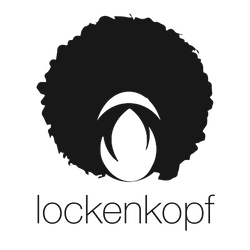Dear curlyheads,
I am often asked which products are best suited to which curl type. I would therefore like to use today's blog post to provide a clear overview of the different curl types and their groupings. This way you can find the right care for your curl type and support your curls in the best possible way.

How do you find your curl type?
Finding your own curl type takes time and attention. Despite the popular belief that curls are simply curls, there are a variety of curl types, each with their own characteristics and properties. It's easy to categorize hair as straight or curly, but that doesn't capture the true beauty of unique waves, crimps and curls. So, how do you determine your own curl type? Here's a hint: it takes patience, time and above all, love for your curls!
The curl types in detail
Type 2a: a slight "S" movement in the hair that stays close to the head. Rather fine hair.
Type 2b: similar "S" shape to type 2a but tends to be slightly more frizzy on the crown. Loses definition easily.
Type 2c: this hair has the coarsest wave form among the wavy curls. They consist of some real curls, not "just" waves.
Type 3a: Curls show a clear "S" pattern that is well defined and usually bouncy. This type of curl has a circumference the width of a piece of sidewalk chalk.
Type 3b: These curls have more volume and a smaller circumference than type 3a - roughly like a lipstick
Type 3c: The curls resemble tight corkscrews and have approximately the circumference of a pencil or straw. Type 3c hair tends to be denser and coarser than type 2 or 3 hair.
Type 4a: Tightly coiled hair with an "S" pattern. It has more moisture than type 4b and a visible curl pattern. The circumference of the spirals is close to that of a crochet hook.
Type 4b: the curly strands have a "Z" shape and a less defined curl pattern. Instead of curling, the hair bends at sharp angles like the letter "Z". Type 4b hair is tightly coiled and can feel wiry to the touch. This is also known as Kinky hair because of the kinks in the "Z" shape
Type 4c: The hair consists of strands that are almost impossible to define without the use of styling products. Type 4c hair can range from: fine, thin and soft to coarse, with dense strands.
Curl types by texture
Another way to categorize hair is by texture. There is often overlap between the type groups, but the texture of the hair makes it easy to distinguish the different curl types:

KinkyKinky has a zig-zag shape rather than classic curls or waves. They tend to get tangled, especially at the ends, which is often a sign that it's time for a cut.

CoilyCoily forms tight rolls (or "coils") that look like spirals. They are very versatile, but also sensitive - especially on fine hair, which only has a very fine natural protective layer.

CurlyCurly forms spirals or loose curls. This texture needs a lot of moisture to achieve beautiful definition and a little frizz can add character to the curls.

Wavy: Wavy has a natural wave shape and no strong curls or spirals.
No matter what type of curl you have, all curls can be damaged by coloring, straightening, chemical treatments or simply by incorrect care and therefore need a lot of love and attention. So you could say that 'damaged' curls are a hair type in their own right!
What does which curl type need?
The care of different curl types is just as different. So what does which curl type need?
Type 2:Make sure you use lighter products that won't weigh your hair down. Mousse, gel and cream gels are good for soft waves.
Type 3 a - 3b: need less moisture, more styling cream, a cream gel or styling milk for less frizz but more definition.
Type 3c: Use styling creams or puddings that moisturize. Deep conditioner at least once a week to maintain elasticity and moisture.
Type 4: Requires a creamy humectant to maximize protection and moisture. A curl-defining pudding or soufflé/smoothie can safely stretch the curls for twist-outs and braid-outs.
No matter what type you are, you should always use sulfate-free shampoos to preserve your hair's natural moisture and protect it from drying out.
I think it's also the case that no Lockenkopf can be pinned down to one curl type. I have what feels like three different curl types on my head.
If you are not sure which products are best for you, send me a photo of your curls together with your "curl request" and I will be happy to help you find the right products for your curls. Of course I am also happy to hear from you, every feedback helps me to make lockenkopf even better.
(I speak German, English and Spanish)
Cordially
Rosa Maria






